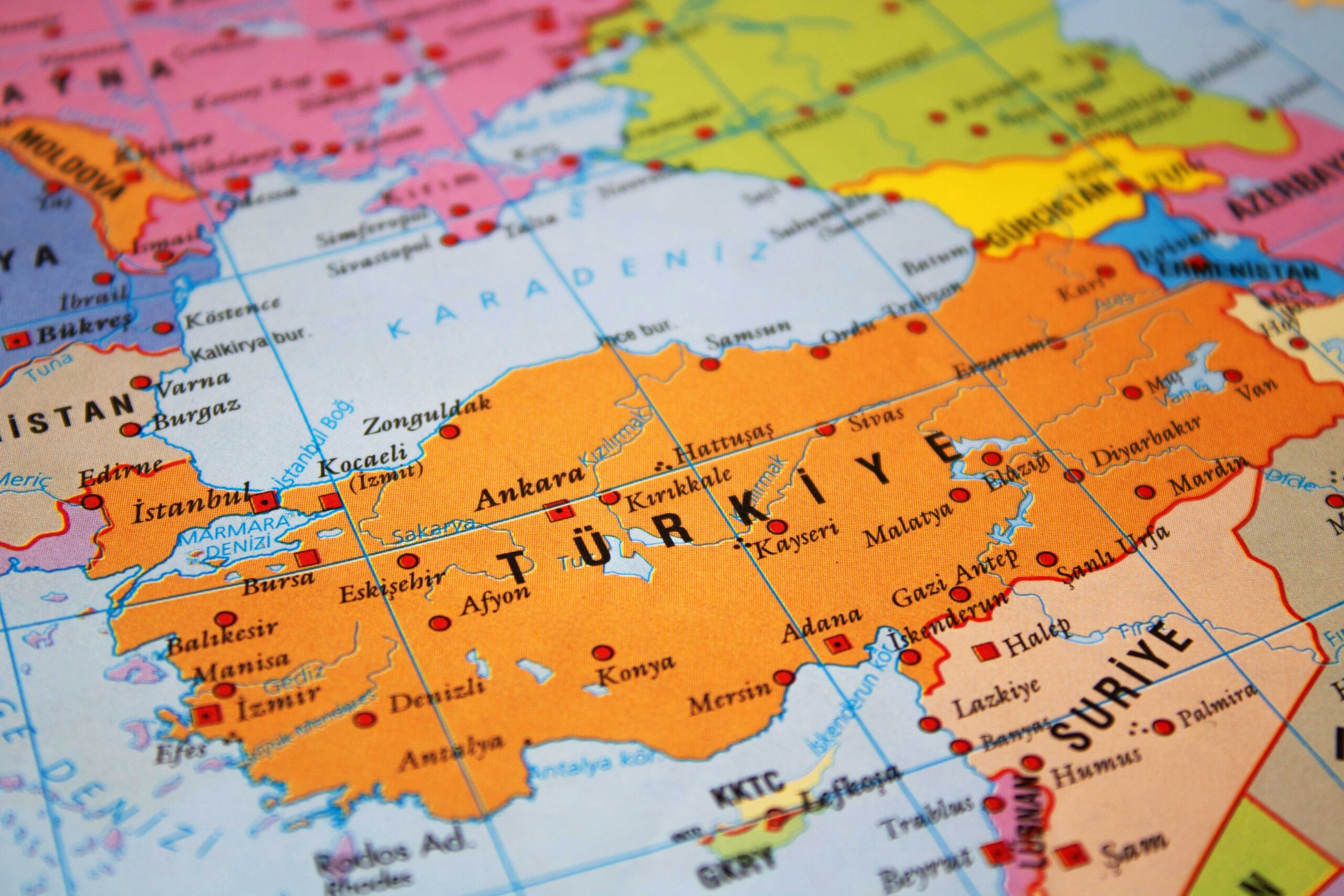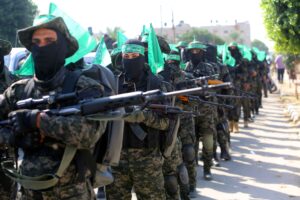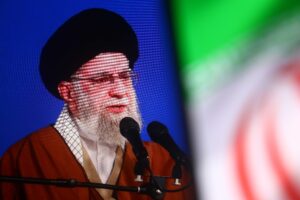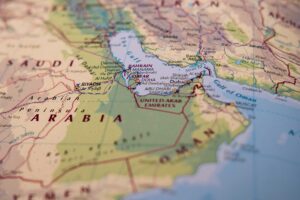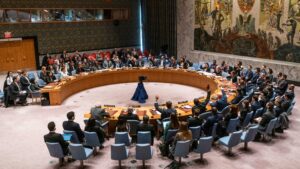Over a decade ago, Turkey-Syria relations have undergone a dramatic shift when then Turkish Prime Minister Recep Tayyip Erdogan and his ruling Justice and Development Party (AKP) decided to end their policy of ‘zero problems with the neighbors’ and interfered in the uprising in Syria. The AKP’s overly ambitious Neo-Ottomanism and revolutionary aspirations, coupled with military activism and Iranian-style proxy warfare campaigns in its neighboring country proved to be a disastrous mixture. Today, Erdogan has no other choice but to return to his Syria policy before the Arab Spring: seeking rapprochement with Syrian President Bashar al-Assad.
Ankara’s motivation to seek reconciliation with Damascus is primarily driven by three factors: domestic troubles stemming from the economic crisis coupled with rising xenophobia and public resentment against Syrian refugees in the country; the failure to eliminate the perceived risk posed by an autonomous Kurdish region in northeastern Syria; and the threat of another exodus of forced migrants from northwestern Syria.
Ankara’s Syria Policy over the Last Decade
Ankara’s humanitarian intervention in the conflict evolved into military activism.
During the early years of the conflict, there was too optimism and even an expectation[i] that the civil war in Syria would not last long. But as the war turned into a protracted conflict, the AKP’s Syria policy underwent dramatic shifts, altering Turkey’s overall foreign policy posture. Ankara’s humanitarian intervention in the conflict evolved into military activism. Led by the Turkish National Intelligence Agency (MIT), AKP governments began emulating an Iranian-style proxy campaign. Without any oversight, the Turkish intelligence agency provided weapons to various groups in Syria, equipping and organizing them as proxies against the Assad regime (and later against the SDF). The Turkish intelligence agency subsequently reorganized the Free Syrian Army under the Syrian National Army (SNA). Ankara also incorporated the National Liberation Front (NLF)[ii], another umbrella opposition group, bringing combined forces up to 80,000.
During the war, Turkey became a gateway for foreign terrorist fighters (FTFs) coming from over a hundred countries worldwide. Additionally, between 2013 and 2016[iii], nearly 9,000 Turkish citizens traveled to Syria or Iraq to join ISIS (the Islamic State of Iraq and Syria).
While the future of Kurds in Syria is one of the most critical issues for Ankara, initially, the AKP did not consider them to represent a significant risk. However, Ankara’s policies eventually shifted from trying to incorporate them into the Syrian opposition and hosting the Democratic Union Party (PYD) leader in Ankara to waging all-out-war against the PYD’s military wing.
In the end, it became evident that the AKP’s Syria policy had failed to achieve its two main objectives: toppling the Assad regime and preventing Kurdish autonomy in northern Syria. Erdogan eventually disavowed, and claimed that his government “never had any intention to meddle in Syria’s internal affairs”.[iv] He has furthermore claimed that turkey has been working hard to reestablish ties with the Assad regime.
Humanitarian Crisis: Syrian Refuges and IDPs
Another key reason motivating Ankara to seek rapprochement with Damascus is the presence of Syrian refugees, who have been in Turkey since the beginning of the war. According to the UN Refugee Agency[v], Turkey “hosts some 3.6 million registered Syrian refugees along with close to 320,000 persons of concern from other nationalities.” Initially, Ankara endorsed what was termed as an “open door” policy for Syrians seeking to escape the conflict. However, Ankara’s assessment once again underestimated the depth and scope of the conflict, as AKP officials expected these refugees to stay in Turkey only temporarily, for up to a year or two.
While initially hosting Syrian refugees posed no significant issues, Turkish public opinion drastically shifted against them due to the prolongation of the conflict in Syria and the concurrent and deepening economic crisis that Turkey was experiencing at home. To alleviate domestic pressure, Erdogan and AKP officials employed several tactics. These ranged from leveraging refugees in negotiations with the European Union, to deploying an Islamist rhetoric, characterizing refugees as ‘Muhacirs’ (al muhajir) and the Turkish host communities as ‘Ensar’ (al Ansar). This rhetoric is important because the word Muhacir refers to the Muslims who migrated from Mecca to Medina in the early history of Islam, and Ensar refers to the host community in Medina.
They also sought to reassure Turkish citizens that their government was actively working to repatriate Syrian refugees, despite conditions there being far from safe. Human Rights Watch reported that “In violation of international law, Turkish authorities have rounded up hundreds of Syrian refugees, even unaccompanied children, and forced them back to northern Syria.”[vi] Since May 2022, Turkey has been using a forced return policy[vii] which resulted in deporting thousands of Syrian refugees back to Syria under what Ankara calls ‘voluntary return’. For example, in 2023, “there was movement from Turkey to the north for 20,319 people[viii], including 11,079 people under ‘voluntary return’ and 7,653 people forcibly deported,” and from January 2023 until July 2024, “more than 57,000 Syrians have been deported to the region of Idlib”.[ix]
In the event of renewed conflict in northwestern Syria, IDPs would likely have no choice but to seek refuge in Turkey.
Beside efforts to repatriate refugees, Ankara also aims to prevent another wave of forced migration from Syria. By the end of 2023, approximately 7.2 million Syrians had become internally displaced persons (IDPs)[x], with 52% of them residing in the northwestern governorates of Aleppo and Idlib.”[xi] In the event of renewed conflict in northwestern Syria, these IDPs would likely have no choice but to seek refuge in Turkey, posing another challenge for the AKP government. The arguments for creating a safe zone in northern Syria included preventing another flow of refugees and resettling the refugees in Turkey in these areas. To this end, Erdogan “proposed building 10 towns in the safe zone[xii], with hospitals, schools, and industrial sites to accommodate a million people.” The cost of this ambitious proposal “is estimated at $26 billion,”[xiii] which Ankara hoped to get from international donors. However, a tangible outcome of this project has yet to be achieved.
Ankara’s ‘Syria problem’ has become intricately linked with the Syrian refugees in Turkey. That means Erdogan must manage public perceptions of Syrian refugees domestically while maintaining control over Turkey-backed proxy groups in Syria.
Recent incidents of vandalism targeting Syrian refugees’ properties[xiv] and violence against Syrians in multiple cities in Turkey highlight growing levels of xenophobia in the country. In recent presidential, parliamentary, and municipal elections, secular nationalists capitalized on anti-immigrant and anti-Syrian refugee rhetoric, gaining significant voter support. Additionally, the main opposition Republican People’s Party (CHP) appears eager to engage in dialogue with Assad.
Erdogan and his ruling AKP find themselves unable to steer the narrative, as opposition parties take the lead in capitalizing on the AKP’s immigration policies. Public sentiment toward Syrians has reached an all-time low. A KONDA survey measuring social distance among Turkish youth toward various minority groups revealed that Afghan and Syrian migrants are viewed with the greatest distance.[xv] Other surveys corroborate these findings[xvi], highlighting a widespread public perception in Turkey that Syrians pose economic and security challenges to the country. Consequently, Erdogan and the AKP face significant pressure to resolve a problem that has persisted for over a decade. In other words, Erdogan sees the Syria problem as an existential risk for his political future.
However, if Erdogan and Assad reach an agreement, the critical question will be how to ensure the safety and well-being of millions of refugees, who are very concerned about their future. According to a recent survey conducted by the Migration Research Centre at Ankara University, only 2.1 percent of the Syrian refugees want to return to Syria.[xvii] The same survey shows that 90% of the Turkish public “don’t believe that Syrian refugees will go back to Syria.”[xviii]
One potential approach could involve Ankara taking responsibility for facilitating a safe transition for refugees’ return, coordinating with the UNHCR, Damascus, and other stakeholders, including the US, Russia, and the European Union. In particular, the EU’s direct involvement in the process could provide both financial and political support for the refugees and a more promising prospect of safe return.
Ankara’s Kurdish Conundrum in Syria
Ankara views the Kurdish-led Syrian Democratic Forces (SDF)[xix], the PYD, and the People’s Protection Units (YPG) as affiliates of the Kurdistan Workers’ Party (PKK), and perceives them as an “existential threat to its national security.” Looking back, the AKP’s intervention in the Syrian uprising during the Arab Spring was primarily aimed at toppling the Assad regime. During the initial stages of the conflict, Ankara did not anticipate the emergence of what it calls a “terrorist state”[xx], referring to the autonomous Kurdish region in northern Syria. In fact, during the initial years of the conflict, the AKP government did not take Kurds seriously.[xxi]
Subsequent efforts by Ankara to persuade the PYD leadership to align with the Syrian opposition and the Free Syrian Army yielded no concrete results. As part of these efforts, then Co-chair of the PYD Salih Muslum has been invited by the AKP government to Turkey.[xxii] However, Ankara’s endeavors to integrate PYD into the Syrian opposition and the Kurdish National Council (ENKS) were unsuccessful. Following ISIS’s siege of Kobani, the Kurds gained international attention, prompting US support and eventual collaboration against ISIS. Emboldened by defeating ISIS in Kobani, the PYD and its military wing began expanding their territory into other northern Syria areas, including Tal Abyad, which triggered Turkey’s military incursion into Syria.
Currently, Erdogan seeks Assad’s assistance in dealing with the Kurdish issue, requiring Ankara and Damascus to renegotiate terms under a new agreement advantageous to the Assad regime. The late Syrian President Hafez al-Assad had faced significant pressure when he signed the 1999 Ankara Agreement with Turkey, pledging not to support or harbor the PKK. However, contrary to this agreement, Ankara now finds itself needing to make concessions to persuade Bashar al-Assad.
Any cooperation without coordination with the United States, which views the SDF as a crucial ally in the fight against ISIS, risks escalating tensions between Turkey and the US, unless the US decides to withdraw from Syria. As of now, the Biden administration indicated[xxiii] that it is “not planning to withdraw from Syria” as long as ISIS remains a threat. Russia and Iran would root for potential tensions between Turkey and the US, but Erdogan also faces risks in relying too heavily on the Assad regime before reaching a comprehensive agreement on Syria’s future.
The Prospect of Reconciliation
Assad’s response to Ankara’s efforts to mend ties has been positive[xxiv], yet the path toward reconciliation will not be a smooth ride. The Assad regime appears open to normalization initiatives “as long as they [Turkey] respected Syria’s sovereignty and contributed to counter-terrorism.”[xxv] Essentially, Damascus will expect Ankara to make significant concessions regarding the Turkish-controlled ‘safe zone’ in the north of the country and the SNA.
Second, Erdogan seeks to engage with the Assad regime from a position of relative weakness. The success of Ankara’s high-cost policy change hinges on continued support and commitment from the Assad regime. Despite holding leverage over Damascus with the SNA and Turkish military presence in Syria, time may not be on Erdogan’s side.
The uncertain future of non-state actors pose substantial risks to reconciliation efforts.
Furthermore, other state actors, including Russia, the United States, and Iran have divergent interests in rapprochement between Ankara and Damascus. For example, the Biden administration does not endorse normalization with the Syrian regime[xxvi] and has emphasized their opposition to it on multiple occasions. In contrast, Russia views Turkish-Syrian rapprochement positively, as it could stabilize Syria and allow Russia to focus on its military actions in Ukraine.
Fourth, the uncertain future of non-state actors pose substantial risks to reconciliation efforts. For instance, the US supports the SDF, while Turkey backs the SNA and the NLF, and Iran sponsors and commands various proxy groups in Syria, contributing to potential instability. Moreover, HTS (Hayat Tahrir al-Sham) administers the volatile Idlib region, where any conflict could trigger mass displacement of Syrians.
After the Russian invasion of Ukraine, Moscow’s ties with Ankara have markedly improved. The war has deepened mutual dependency between Russia and Turkey, prompting Russian President Vladimir Putin to support Erdogan’s efforts toward reconciliation with Assad. Regardless of the outcome- whether successful or not- Putin stands to benefit as the mediator in this process.
Iran, amid escalating tensions and confrontation between Israel and Lebanese Hezbollah, favors a stable Syria. Therefore, Iranian interests align with Ankara and Damascus’ rapprochement, allowing Iran to focus more on potential sources of regional conflict, most notably Israel.
Potential Risks Awaiting Rapprochement
Even if Erdogan manages to reconcile with Assad and reverts to the old days of referring to him as “his brother Assad,” Ankara still has to walk a tightrope to achieve its objectives through the reconciliation with the Syrian regime. That is to say, while rapprochement offers opportunities, it also poses potential risks that Ankara must navigate.
First and foremost, if the reconciliation process falters and conflict erupts in Idlib, controlled by HTS, as well as in the regions controlled by Turkey-backed SNA along with northeastern Syria controlled by the SDF, Turkey could face a significant risk of another conflict on its southern border with Syria.
Second, armed conflicts in these areas could lead to millions of internally displaced Syrians seeking refuge in Turkey and Iraq. Furthermore, the conflict landscape in Syria might mobilize Turkish-origin jihadist and returnee FTFs who are currently in Turkey, potentially engaging in terrorist attacks within the country.
Third, ISIS “maintain a presence and mobility, and engage in sporadic attacks”[xxvii] in Syria, so any large-scale instability could provide opportunities for the resurgence of the group in the region.
Moreover, if the US administration maintains its current policy of cooperation with the SDF while Ankara and Damascus agree to target it, it could escalate tensions between Turkey and the United States.
Finally, factionalism within Turkey-backed factions like the SNA and NLF may lead to turf wars and clashes. Ankara’s recent diplomatic overture toward Damascus have sparked backlash among these people. Turkey-backed groups in Syria demonstrated this in the recent riots and clashes in northwestern Syria.[xxviii] Syrians in the rebel-held areas might fear abandonment by Ankara and its forces, believing they could be left vulnerable to the brutality of the Assad regime.”
Ankara’s Syria dilemma, both within Syria and domestically, is compelling Erdogan to make bold moves. Although his openness to engage with Assad appears hopeful[xxix], the likelihood of a successful Ankara-Damascus reconciliation remains low without significant concessions from both sides. If Erdogan seeks to revive the friendship of the past, he must carefully manage risks both within Turkey and across Syria.
[i] T24 (2013). “AKP Minister of Foreign Affairs: The Kurdish state is slowly being established”, 29 July 2013, retrieved from: https://t24.com.tr/haber/yasar-yakis-asker-suriyeye-girerse-geri-donmesi-imkansiz,235464.
[ii] European Union Agency for Asylum (2020). “Anti-government armed groups”, September 2020, retrieved from: https://euaa.europa.eu/country-guidance-syria/13-anti-government-armed-groups.
[iii] International Crisis Group (2020). “Calibrating the Response: Turkey’s ISIS Returnees”, 29 June 2020, retrieved from: https://www.crisisgroup.org/europe-central-asia/western-europemediterranean/turkiye/calibrating-response-turkeys-isis-returnees.
[iv] Gazete Duvar (2024). Video on X/Twitter, 28 June 2024, retrieved from: https://x.com/gazeteduvar/status/1806649719508058481.
[v] UNHCR (2024). “Refugees and Asylum Seekers in Turkey”, retrieved from: https://www.unhcr.org/tr/en/refugees-and-asylum-seekers-in-turkey.
[vi] Human Rights Watch (2022). “Turkey: Hundreds of Refugees Deported to Syria”, 24 October 2022, retrieved from: https://www.hrw.org/news/2022/10/24/turkey-hundreds-refugees-deported-syria.
[vii] Enab Baladi 2024). “Deportation of Syrians from Turkey: From election card to state approach”, 7 May 2024, retrieved from: https://english.enabbaladi.net/archives/2024/05/deportation-of-syrians-from-turkey-from-election-card-to-state-approach/.
[viii] Ibid.
[ix] Holleis, J. (2024). “Syria: Refugees return to ‘square one’ at best”, DW, 7 June 2024, retrieved from: https://www.dw.com/en/syria-refugees-return-to-square-one-at-best/a-69539203.
[x] Internal Displacement Monitoring Centre (2023). “Country Profile: Syrian Arab Republic”, retrieved from: https://www.internal-displacement.org/countries/syria/#:~:text=Overview&text=Syria%20continues%20to%20grapple%20with,highest%20figure%20globally%20after%20Sudan.
[xi] Internal Displacement Monitoring Centre (2024). “Syria: Disasters compound challenges for IDPs and drive first increase in displacements in four years”, 14 May 2024, retrieved from: https://www.internal-displacement.org/spotlights/Syria-Disasters-compound-challenges-for-IDPs-and-drive-first-increase-in-displacements-in-four-years/.
[xii] Gall, C. (2019). “Turkey Wants Refugees to Move to a ‘Safe Zone’. It’s a Tough Sell.”, The New York Times, 1 November 2019, retrieved from: https://www.nytimes.com/2019/11/01/world/middleeast/syria-refugees-turkey-safe-zone.html.
[xiii] Ibid.
[xiv] Al-Khalidi, S. and Butler, D. (2024). “Turkey closes Syria border after violence flares in both countries”, Reuters, 3 July 2024, retrieved from: https://www.reuters.com/world/middle-east/turkey-closes-syria-border-after-violence-flares-both-countries-2024-07-02/.
[xv] KONDA (2024). “Young People’s Political Preferences Research 2024”, March 2024, retrieved from: https://konda.com.tr/uploads/genclerin-politik-tercihleri-arastirmasi-2024-64df8822aead837953c985b7a856bc911a53b8524850b4725246f7b92b74b216.pdf.
[xvi] Bianet (2024). “Areda Survey:”, 25 June 2024, retrieved from: https://bianet.org/haber/areda-survey-halkin-gundemi-ekonomi-ve-enflasyon-birinci-parti-chp-296780
[xvii] Kamu Express (2024). “Syrian immigrants do not want to return. Turkish Grand National Assembly discussed the situation of refugees”, 17 July 2024, retrieved from: https://kamuexpress.com/haber/suriyeli-gocmenler-donmek-istemiyor-tbmm-multecilerin-durumunu-ele-aldi-111275.
[xviii] Ibid.
[xix] Ozeren, S. and Cubukcu, S. (2023). “Will Turkey’s Meddling in Syria Solve the Kurdish Dilemma?”, Orion Policy Institute, 11 January 2023, retrieved from: https://www.orionpolicy.org/orionforum/161/will-turkey-s-meddling-in-syria-solve-the-kurdish-dilemma.
[xx] AA (2019). “President Erdogan: We will not allow the establishment of a terrorist state in norther Syria”, 13 October 2019, retrieved from: https://www.aa.com.tr/tr/baris-pinari-harekati/cumhurbaskani-erdogan-suriyenin-kuzeyinde-teror-devletinin-kurulmasina-musaade-etmeyecegiz/1612125.
[xxi] T24 (2013). “AKP Minister of Foreign Affairs: The Kurdish state is slowly being established”.
[xxii] Diken (2014). “PYD leader Salih Muslim arrives in Ankara”, 4 October 2014, retrieved from: https://www.diken.com.tr/pyd-lideri-salih-muslim-ankaraya-geldi/.
[xxiii] NPA Syria (2024). “U.S. diplomat rules out American forces withdrawal from Syria”, 6 July 2024, retrieved from: https://npasyria.com/en/115165/.
[xxiv] Al-Monitor (2024). “Erdogan open to hosting Assad, Putin as Syria-Turkey channels widen”, 5 July 2024, retrieved from: https://www.al-monitor.com/originals/2024/07/erdogan-open-hosting-assad-putin-syria-turkey-channels-widen.
[xxv] Iran International (2024). “Turkey’s Erdogan Does Not Rule out Meeting Syria’s Assad to Restore Ties”, 28 June 2024, retrieved from: https://www.iranintl.com/en/202406285404.
[xxvi] NPA Syria (2024). “U.S. diplomat rules out American forces withdrawal from Syria”.
[xxvii] Ozeren, S. (2023). “What Does ISIS’ Survival Tell Us About Countermeasures?”, Orion Policy Institute, 5 June 2023, retrieved from: https://www.orionpolicy.org/research/188/what-does-isis-survival-tell-us-about-countermeasures.
[xxviii] MEMO (2024). “Protests against Turkiye military presence sweeps through northern Syria, leaving 4 dead”, 2 July 2024, retrieved from: https://www.middleeastmonitor.com/20240702-protests-against-turkiye-military-presence-sweeps-through-northern-syria-leaving-4-dead/.
[xxix] AP (2024). “Turkey’s president expresses willingness to restore diplomatic ties with Syria”, 28 June 2024, retrieved from: https://apnews.com/article/turkey-syria-diplomatic-relations-ec9876ed10183ef235c38ca387ac4731.

